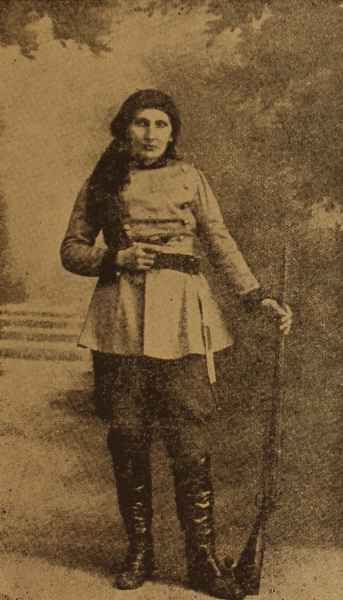Death of Sose Mayrig (February 9, 1953)

The Armenian fedayee movement at the end of the nineteenth and beginning of the twentieth centuries was not just a men’s issue. Women also had a share in the self-defense against Kurdish and Turkish attacks. Sose, the wife of famous fedayee Serop Aghpyur, was one of the most famous names that transcended history and remained as a symbol of pride and self-sacrifice.
She was born in the village of Teghud, in the region of Sasoun, in 1868. In 1881, at the early age of thirteen, she married Serop Vartanian, from the nearby village of Sokhourt. Two years later, Hagop, the elder son of Serop and Sose, was born. They had a second son later.
In the 1890s, like many Armenians in the provinces, Serop was forced to leave the village as a migrant worker, going to Constantinople to ensure the life of the family and leaving Sose to care for their home and their children. In Constantinople, he became a member of the Armenian Revolutionary Federation and, when he returned in 1895, he started preaching the motto, “Boys, remain without bread, but don’t remain without a weapon.” Sose remained on his side. The fedayees did not get married in principle, but if they were married, they stayed away from their families. However, for the next four years, Sose shared Serop’s wandering life throughout the region of Daron with her children, fighting on his side against Turkish and Kurdish injustice and outrages. Serop’s freedom fighters gave her the surname Mayrig (“mother”) for the maternal care she gave to the Armenian youth.
In 1898, Serop returned to the region of Sasoun, and the village of Geliguzan was his group’s hideout in late 1899, when an Armenian traitor not only poisoned the brave fighter with a poisoned cigarette, but denounced him to the authorities. Turkish and Kurdish forces surrounded the village. Serop was so weak that he could not stand up. Sose, along with Serop’s brothers Zakar and Mkho and his son Hagop, fought an unequal battle for eight hours. Serop was killed and beheaded, and his brothers and elder son killed. Their younger son was taken by the Kurds and disappeared. Sose was gravely wounded and taken prisoner. However, Bshare Khalil, the head of the attackers, did not allow his men to touch her. She was cured and thrown to jail in Bitlis, but was freed later.
After the Sasoun uprising of 1904, Sose Mayrig moved to Van. She participated in the heroic defense of Van in April-May 1915, and when the Armenian volunteers were forced to retreat with the Russian forces, she also left and settled in Yerevan, where she remained until the end of the independence of Armenia in 1920.
She was among those A.R.F. members who left Armenia due to the Bolshevik persecution and settled in Constantinople for a very short time. Faced with the Kemalist danger, Sose Mayrig left the Ottoman capital and settled in Alexandria, Egypt, where she lived until the end of her life with Hayk Khanamirian’s family.
Her life of tragedy and unselfish sacrifice came to its end on February 9, 1953, in Alexandria, at the age of eighty-five. On the eightieth anniversary of the first Republic, Sose Mayrig ashes were moved to Armenia and reburied in the military cemetery of Yerablur.
In the 2010s, the Armenian Relief Society established in Artsakh a network of kindergartens named “Sose” in her memory.
